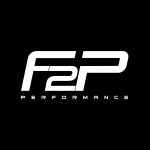Hockey In-Season Training
It is that time of the year when the sports seasons start to shift. Over the last number of weeks, our hockey and basketball athletes have started their in-season again. Once the season starts, your time and what you can do starts to shrink as practices and games start to fill up your time. With that said, it allows for an athlete to reflect and focus on what really matters when trying to reach their goals. Sacrifice has to happen somewhere, it is just their choice of what it will be. Often that sacrifice comes in the form of your athletic training and preparation. Most of the time the goal is just to do enough to get by or maintain. At F2P we look at it in a different way. It’s the time where we need to adjust training objectives in order to ensure athletic development continues to occur. We don’t peak for the season, we build up to and through the end of the season!
One thing that I want to touch on first is recovery and recovery workouts. We measure an athlete’s 4 jump reactive test on a consistent basis during in-season training which tells us their nervous system fatigue. This will tell us how much volume the athlete can take in training. Instead of training, rest is an option as well. Why not do a recovery workout? Because the recovery process should be a daily habit the athlete does, not a workout in our minds.
So how do we go about training for our hockey players? Here is a little run down.
The first thing we look at is what patterns the athletes are changing, not at F2P but, out on the ice. We can assume that the athletes are going to be skating more, most weeks probably 5-6 days a week. Due to the nature of skating, when an athlete is skating more they are going to activate and tighten the glute medius more and stiffen the ankles, which takes away some eccentric ability in those muscles.
When a player starts to get tighter through their glute medius, I have found they start to rotate out on their toes and hips. When this change starts to occur, it is going to expose the athlete to less stability through their pelvis or their hips will start to rotate side to side or their knees will start to cave in. This change in alignment will expose the athlete to lower back and groin injuries. So how do we combat this? First and for most coaching proper alignment from the warm-up to the cooldown is essential. It isn’t uncommon for me to have a hockey athlete when performing a basic bodyweight squat in their warm-ups to see them shift their hips because one glute medius is tight and can’t handle the tension. Not only do I have to make the athlete aware that this is happening, but I also have to take this into account with their program design to ensure maximum injury prevention as well as continued athletic development.
When an athlete skates more they also tend to lose ankle mobility and strength. The ankle is the closest joint to the ice thus is key for proper energy transfer onto the ice. Any loss of mobility and/or strength will not only hurt energy transfer in the skating stride but also change muscle and tendon activation in the ankle (in a negative way). If the ankle joint is compromised it will affect all the joints above it, especially the knee. If the ankle doesn’t have the support to keep proper alignment and instead dissipates force, most often it will roll in or not achieve great enough dorsi flexion, the muscles at the knee will have to do more work to compensate. Either way, this will lead to decreased performance or increased energy expenditure (fatigue). This is the reason we place such high importance on the ankle with our in-season hockey training.
The nature of the skating isn’t a reactive one like running. Think about it this way, if you were to only run in the sand for 5 months or so (length of a season) how would you feel? Skating, like running in sand, will take the rubber band effect (eccentric ability) of the body out of the movement to some degree. Eccentric ability is the way the body most optimally transfers force. It goes without saying this is going to affect one’s performance on the ice in a negative way if lost. Things such as the extension of skating stride, the speed that the leg can coil back for recovery for the next stride, and the loading of a shot need to be able to have maximum energy transfer. Without monitoring where the athlete’s eccentric ability is during the season their performance can’t be elevated to the greatest level. This is why for many of our hockey athletes their programs have a higher amount of exercises that enhance their eccentric ability compared to some other times of their yearly training cycle.
We argue that in-season training is just as vital as out of season. We have shown that with just these few elements that our in-season hockey programs take into consideration.




